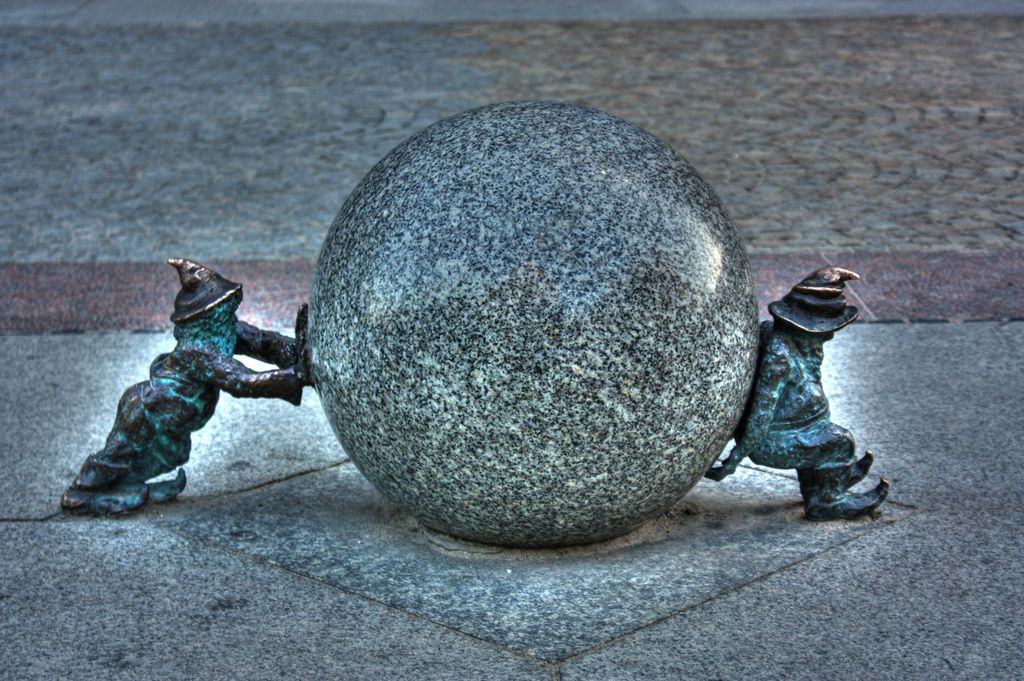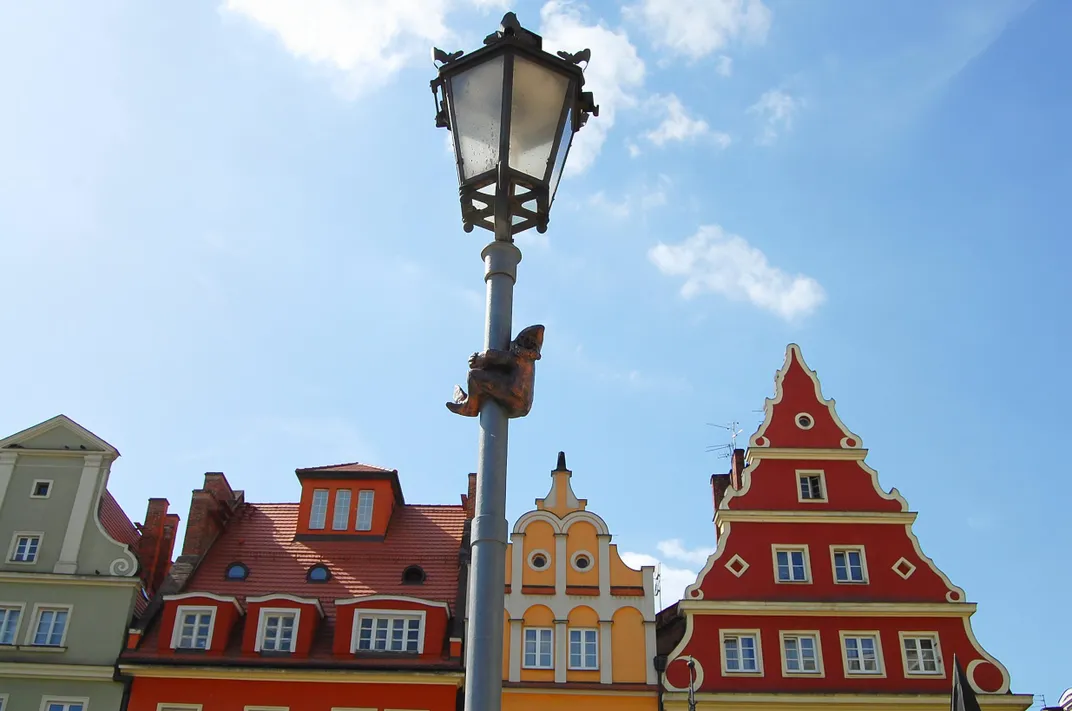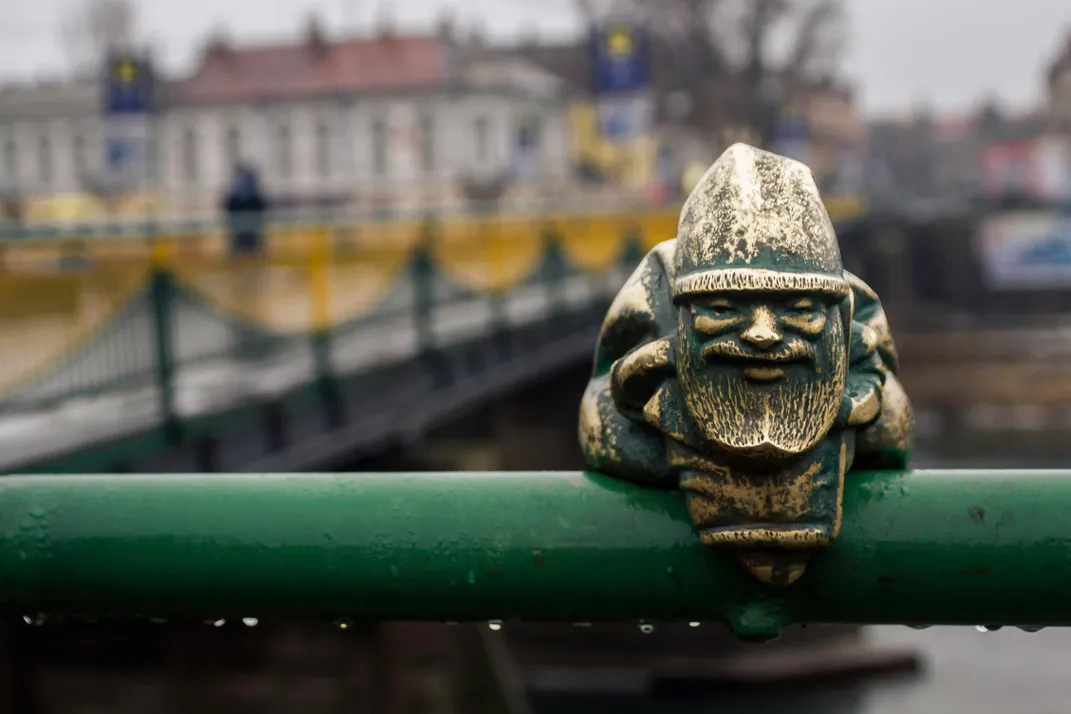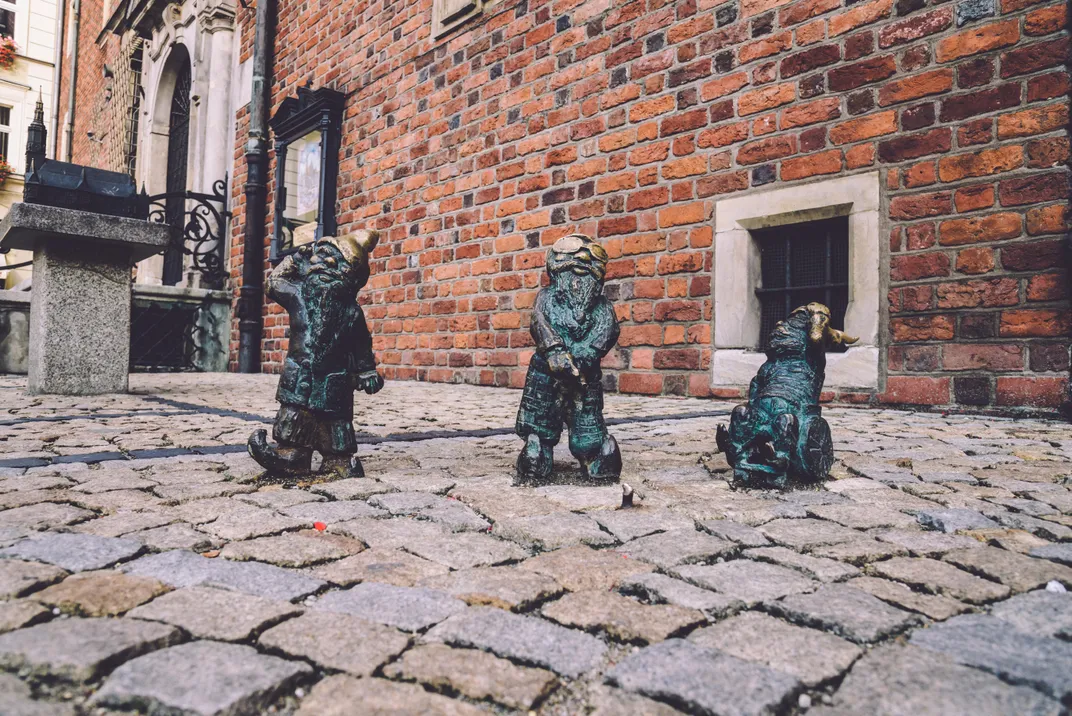Where to Hunt for the World’s Smallest Monuments
Don’t overlook these tiny statues in cities around the world
/https://tf-cmsv2-smithsonianmag-media.s3.amazonaws.com/filer/78/a9/78a96a2b-4a7a-4212-ac31-dd8bf5681112/wrocaw-dwarf-poland-2.jpg)
From the Sphinx in Egypt to the Statue of Liberty in the United States, the world’s largest monuments are typically the ones that get the most recognition, filling up people’s Instagram feeds and topping many travelers’ bucket lists. But for every massive monolith that gets its time in the spotlight, there’s a smaller yet equally interesting monument that is harder to spot—but worth hunting for. Here are six of the world’s smallest monuments worthy of a visit.
Chizhik-Pyzhik, Saint Petersburg, Russia
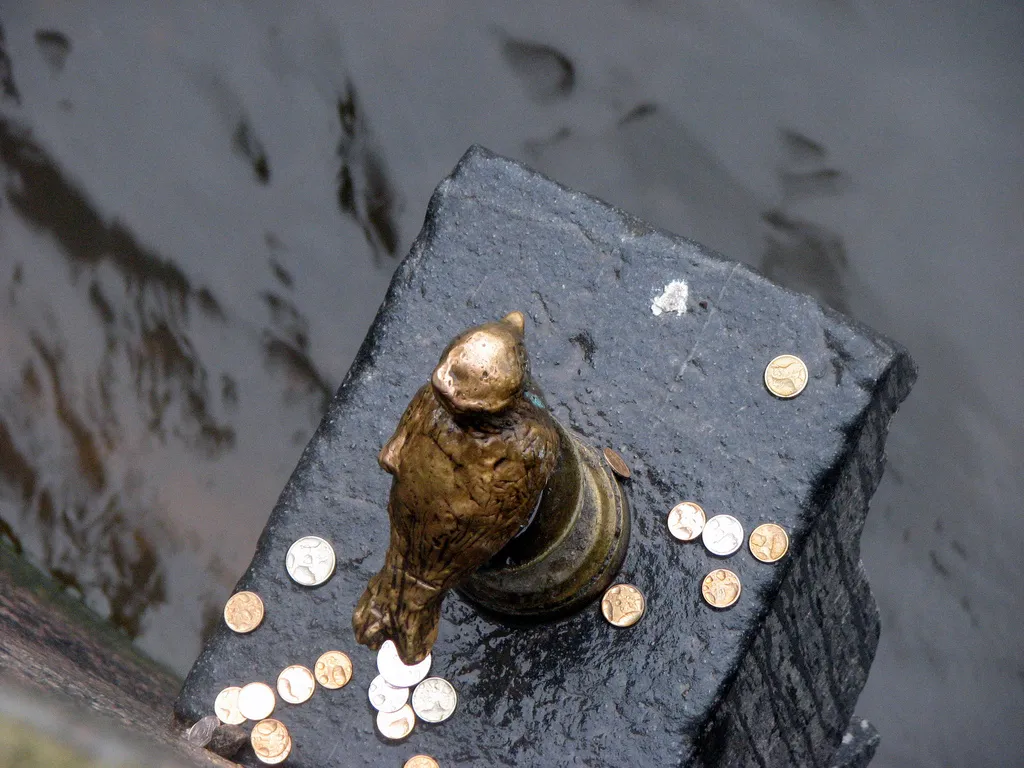
Tiny monuments are easy to overlook. Most tourists passing over the First Engineer Bridge where the Fontanka and Moyka rivers meet miss the four-inch statue perched on a small ledge on the stonework below. This statue, called Chizhik-Pyzhik, is a miniature bronze sculpture of a siskin (chizhik in Russian), a bird related to the finch.
Georgian sculptor Rezo Gabriadze created the piece in 1994 as a tribute to the often rowdy students that attended the Imperial Legal Academy that once occupied the same site. The figure is a nod to the students' green and yellow uniforms, which mimicked the color pattern of the bird. The school, founded in 1835 under the approval of Tsar Nicholas I, taught jurisprudence to the children of Russia's nobility for over 80 years. Although alcohol was forbidden at the school, the students' covert social activities were memorialized in a popular folk song known throughout Russia: “Chizhik Pyzhik, where've you been? Drank vodka on the Fontanka. Took a shot, took another, got dizzy.” The school was closed in 1918, following the Bolshevik Revolution.
One of the problems with having a mini monument is that thieves often see it as a free souvenir. Over the years, the sculpture has been the victim of theft on numerous occasions, so in 2002 the staff of the Museum of Urban Sculpture had several copies made, just to be safe.
If you spot the small sculpture, it’s believed that dropping a coin that lands on the ledge brings good luck.
Dwarfs, Wrocław, Poland
Since 2001, more than 300 miniature bronze statues of dwarfs have sprouted up throughout the city of Wrocław, lurking in the alleyways or standing in plain sight outside of businesses. But while they may be cute to look at, they have an unusual history tied to resistance to Communism.
The dwarfs are a nod to the Orange Alternative, an underground anti-Communism group that often used graffiti, particularly drawings of dwarfs, to get their message across. The dwarfs originally started popping up in the early 1980s when protest artists started adding arms and legs to the "blobs" that resulted when more overt anti-government slogans were painted over. These dwarf figures caught on, becoming the symbol of the movement. On June 1, 1987, the coalition held a massive rally where thousands of demonstrators donned red hats and marched through the city.
As a way to commemorate the Orange Alternative’s contribution to the fall of Communism in central Europe, the city commissioned local artists to create bronze sculptures of dwarfs. And today, its annual Wrocław Festival of Dwarfs proves popular every September.
Guides marking the locations of the tiny statues can be purchased at the Wroclaw tourist information center. 52 of them can also be found using this map.
The Two Mice Eating Cheese, London
/https://tf-cmsv2-smithsonianmag-media.s3.amazonaws.com/filer/87/d3/87d30e43-6730-45ad-8382-88703ad351c5/22153223984_3e7ef22aa9_b.jpg)
You have to crane your neck to spot London’s smallest statue, a carving of two mice battling over a hunk of cheese, located on the upper façade of a building at the intersection of Philpot Lane and Eastcheap in London. “The Two Mice Eating Cheese” is in remembrance of two men who died during the construction of the Monument to the Great Fire of London, a stone column built in 1677 in memory of those who perished in a devastating citywide fire that had occurred in 1666. Although details of the incident are murky at best, the legend is that the men fell to their deaths after a fight broke out after one of them accused the other of eating his cheese sandwich. It was later learned that the real culprit was a mouse.
Frog Traveler, Tomsk, Russia
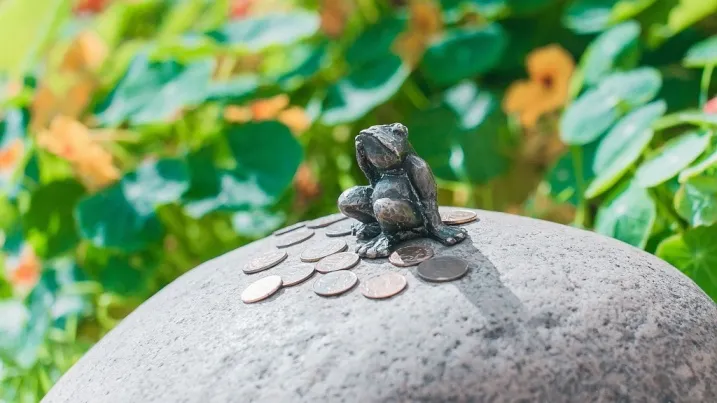
If you blink, you might miss the “Frog Traveler,” considered the smallest public monument in the world. Located outside Hotel Tomsk in Russia, the barely two-inch bronze statue, created in 2013, is the work of sculptor Oleg Tomsk Kislitsky. In a statement, the artist says that his goal was to create the world’s smallest monument while also giving a nod to the travelers of the world. He based the idea for the piece on a popular Russian children’s book called The Frog Went Travelling, by author Vsevolod Garshin, which tells the tale of a traveling amphibian and the creatures he meets along the way.
Miniature Washington Monument, Washington, D.C.
/https://tf-cmsv2-smithsonianmag-media.s3.amazonaws.com/filer/0b/51/0b5171fd-f9f5-4aa0-a84f-b83e2a21fd74/2014_04_08_wm_030_-_top_of_bench_mark_a_showing_gouge_in_west_edge.jpg)
By far, one of the most recognizable structures in Washington, D.C., is the Washington Monument—but it’s what’s underfoot that deserves a second look. Located underneath a manhole cover nearby sits a 12-foot replica of the towering obelisk that commemorates George Washington. Known as Bench Mark A, the replica is actually a Geodetic Control Point used by surveyors when working on government maps. It’s just one of approximately one million such control points spread throughout the country, though most are less interestingly shaped. Although this one technically belongs to the National Parks Service, the National Geodetic Survey uses it when it’s surveying the Washington Monument and the National Mall. (For example, the NGS used it in 2011 after an earthquake took place in Virginia.) It dates back to the 1880s, and it's obvious that its creators had a sense of humor. Just make sure to talk to a park ranger before attempting to open the manhole.
Mini-Europe, Brussels, Belgium
/https://tf-cmsv2-smithsonianmag-media.s3.amazonaws.com/filer/71/34/7134d6aa-1f1a-498b-b144-bc84d1dc0f64/8966763661_54cb1d9c6a_k.jpg)
From Big Ben in the United Kingdom to the Leaning Tower of Pisa in Italy, Europe is home to some of the world’s most recognizable monuments. The only problem is that it may require multiple trips to see them all. An alternative option would be to spend the day at Mini-Europe, an amusement park in Brussels, Belgium, where you can behold all the great sites before suppertime.
Opened in 1989, Mini-Europe re-creates each structure on a scale of 1 to 25. So expect to see a 43-foot tall Eiffel Tower (the real one is 984 feet in height) and a 13-foot Big Ben (the actual size is 315 feet) all down to the tiniest of details—meaning the Mount Vesuvius here actually erupts. In total, the park encompasses 350 monuments from roughly 80 cities. With Brexit on the horizon, the fate of the park’s UK display remains to be decided.
(Correction: The story previously incorrectly stated that the Monument to the Great Fire of London was constructed in 1841. Construction began in 1671 and was completed in 1677.)
Planning Your Next Trip?
Explore great travel deals
Smithsonian magazine participates in affiliate link advertising programs. If you purchase an item through these links, we receive a commission.
